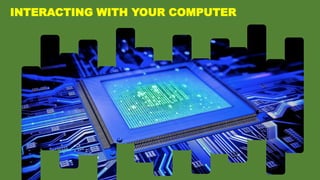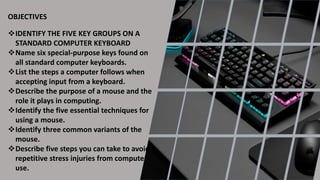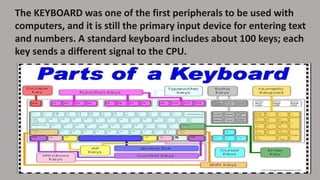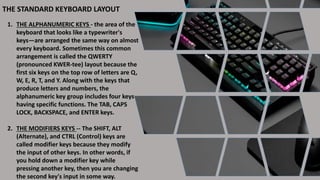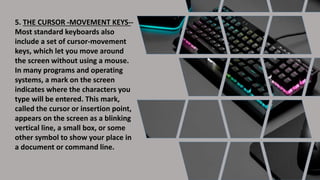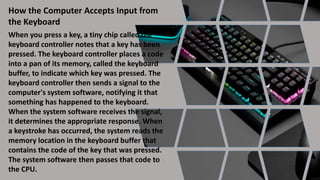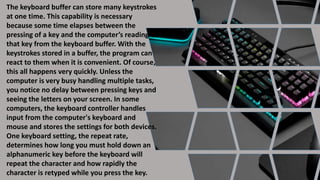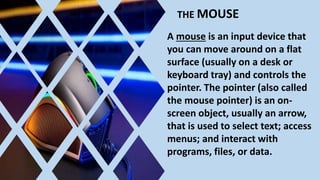Here are the answers to the questions in my own words:
1. The five major groups of keys on most standard keyboards are: alphanumeric keys, modifier keys, numeric keypad, function keys, and cursor movement keys.
2. Most standard keyboards are called 'QWERTY' keyboards because the first six letters on the top left row of letters spell out QWERTY. This specific letter arrangement has been used on keyboards since the late 1800s.
3. The CTRL key is a modifier key that modifies the input of other keys pressed with it. When you hold down the CTRL key and press another key, it changes the input or command associated with that second key.
4. The purpose of the mouse pointer
